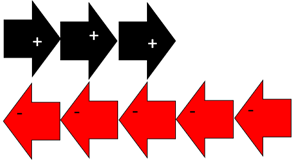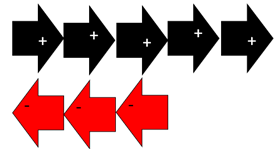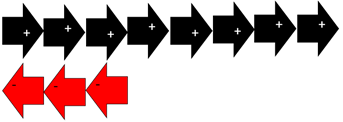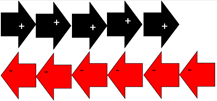The purpose of this activity is to support students in understanding how addition applies to positive and negative integers.
Students often develop an over-generalisation that “addition makes bigger”, that is the sum (answer) is always larger than the beginning addend. With the addition of a negative integer the sum is smaller than the starting addend. Within this activity, you might introduce relevant te reo Māori kupu, such as tau tōpū (integer).
- Use the integer cards to generalise the effect of adding positive and negative integers.
Hone says that addition always makes the number bigger. He uses 3 + 5 = 8 as an example. 8 is bigger than 3.
Arohia says that Hone is right for some examples. She thinks that addition does not always make the number bigger.
Who do you think is right?
- Let students discuss the claims of Hone and Arohia.
After a time, invite them to share their ideas.
Students might mention that addition of zero leaves the number unchanged.
- Use the integer cards to explicitly act out the addition of zero.
For example, make positive four or negative five and act combining those collections with a set of no cards. What is the result? Generalise that adding zero results in the sum being the same as the other addend.
Record the equations:- +4 + 0 = +4
- -5 + 0 = -5
Students might also think of examples where a negative amount is combined with a positive amount, for example, +3 + -5 = -2, as shown by the arrows below.

Create further examples of equations where the sum is greater than the first addend, equal to the first addend, and less than the first addend. Examples might be:
Sum is less Sum is equal Sum is greater 


+4 + -2 = +2 -2 + 0 = -2 +5 + +3 = +8 - Invite students to generalise the situations in which the addition of a number makes the sum greater, less, or equal to the first addend. It is important students focus on the effect of the operation rather than the starting addend.
Does it matter whether, or not, the first number, addend, is positive or negative?
What happens if the first addend is zero?
- Use a number line to represent the generalisation.

- Apply the direction model with examples, such as:
- +3 + -6 = -3

- -2 + 7 = +5

- +3 + -6 = -3
Next steps
- Progress to balance situations where an integer is added. For example, begin with a balance of +2.

- Explore what happens to the balance as integer amounts are added.
- +2 + +3 = +5

- +2 + -3 = -1

- +2 + +3 = +5
- Explore adding three or more integers, such as +5 + -3 + -4.
- Explore whether, or not, the order of the addend affects the sum. For example:
Is this true? +4 + -3 = -3 + +4 - Apply addition of integers to contexts such as height above sea level, temperature, and finance.